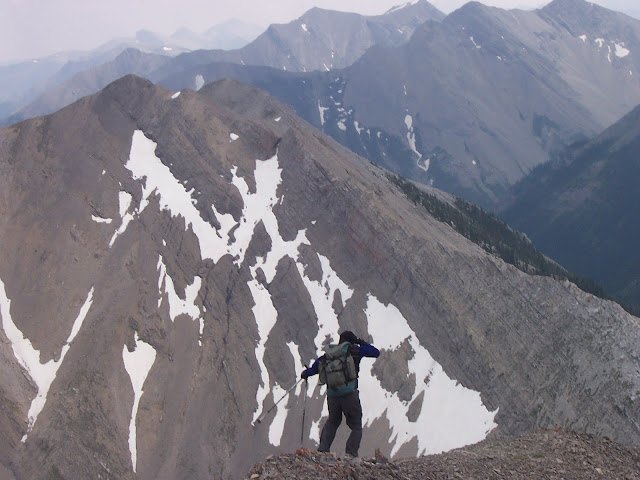 |
| Various shots of the front, shot from the plane |
“We're trying to increase the awareness about the immense ecological and social values of the Front with key decision makers, citizens and the general public,” said Jennifer Ferenstein, The Wilderness Society official coordinating the flights.
She was working with a coalition that includes the Montana Wildlife Federation, Montana Wilderness Association, the society, and the Friends of the Rocky Mountain Front.
Among those who flew with EcoFlight included Secretary of State Brad Johnson, State Auditor John Morrison, Mark Simonich, Johnson's chief policy adviser, Steve Doherty, Great Falls lawyer who chairs the Montana Department of Fish, Wildlife and Parks, Mike Volesky, natural resources adviser on the governor’s staff, Great Falls Mayor Randy Gray and John Tester, Montana Senate President from Big Sandy.
 |
| Bruce Gordon, pilot and Echo Fight CEO |
The Front has been controversial for years because of its suspected natural gas resources. It has been ruled off limits for exploration by the Lewis and Clark National Forest and is being studied by the Bush Administration, which could reverse the ban.
On the plane with me was Gene Sentz, the Choteau school teacher who is the push behind the citizen-based Friends of the Rocky Mountain Front, which opposes exploration and development of oil and gas there. He has brought numerous officials and media to the area to extol its natural beauty and wilderness qualities which he believes would be destroyed by such development.
The first Wednesday flight included a video-photographer working on a Public Broadcasting System film on the area. Tuesday’s flight included a Great Falls television crew.
The five-seat Cessna, single propeller plane took off from Choteau Airport at 6 a.m., and for an hour smoothly plied the sky under EcoFlight president and pilot Bruce Gordon from the South Fork of Teton Creek north to the Swift Dam area and as far back as the North Fork of the Sun River. Other flights went as far north as Pincher Creek where Canadians have developed their oil and gas reserves in their version of the Front.
Features in the Bob Marshall like Pentagon and Silvertip peaks, North Wall, Rocky Mountain peak and the northern part of the Front could clearly be seen in the muted shadows of sunrise. Passengers were awed by the upthrust limestone peaks, reefs, and parallel valleys.
Special attention was paid to the Blindhorse Creek area, in the Choteau peak area, where a Canadian exploration company has staked potential well sites.
Sentz said the plane was rented from EcoFlight under a grant and contributions from individuals. He seemed pleased by the response to the flights.


























